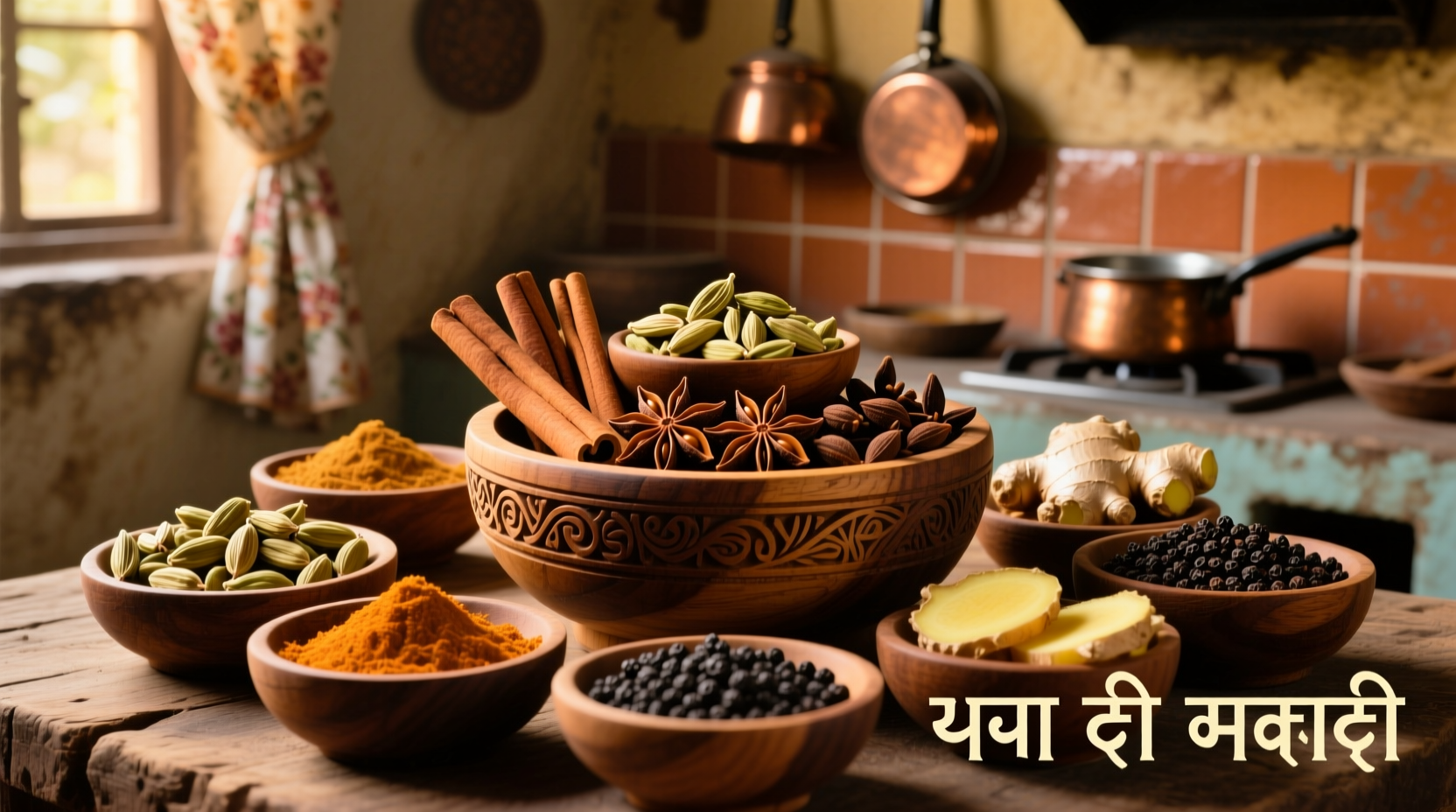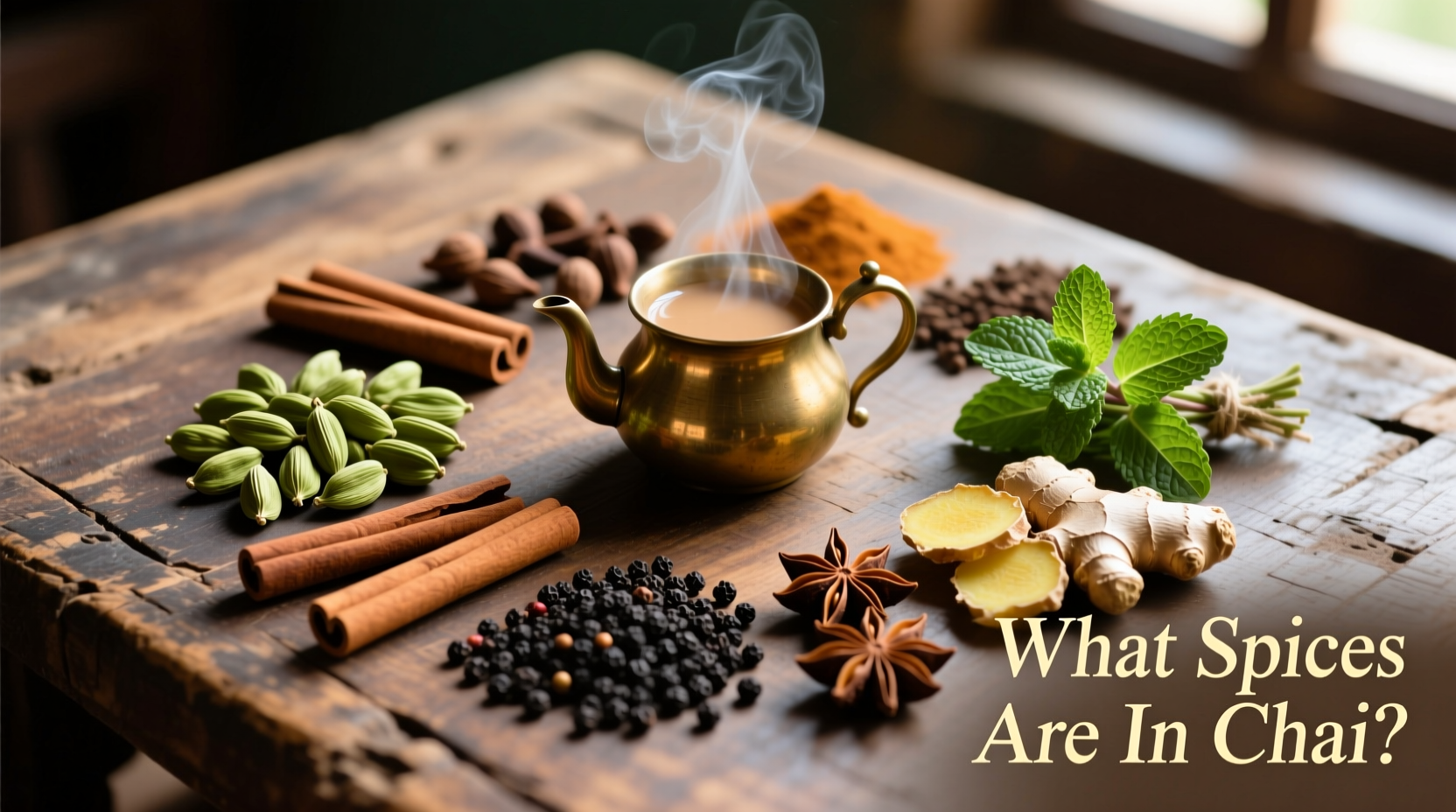Chai has journeyed from ancient Ayurvedic preparations to become one of the world's most beloved beverages, with over 87% of Indian households consuming it daily according to the Tea Board of India. Understanding the authentic spice blend transforms your chai from ordinary to extraordinary.
The Essential Spices That Define Authentic Masala Chai
While "chai" simply means "tea" in Hindi, the term has come to represent the spiced milk tea preparation that's captivated global palates. The magic happens through a precise blend of warming spices that work in harmony with black tea.
Core Spices and Their Roles
These five spices form the foundation of traditional masala chai across most of India:
- Cardamom (Elaichi) - The floral heart of chai, providing citrusy sweetness that balances the heat
- Cinnamon (Dalchini) - Adds warmth and subtle sweetness while helping extract other spice flavors
- Ginger (Adrak) - The fiery backbone that gives chai its characteristic warmth and digestive properties
- Cloves (Laung) - Contribute intense aromatic depth with their distinctive eugenol compounds
- Black Pepper (Kali Mirch) - The secret weapon that enhances bioavailability of other spices
"The pepper isn't just for heat," explains Sarah Johnson, our culinary historian. "In Ayurvedic tradition, black pepper increases the bioavailability of other spices by up to 3,000%, making the entire blend more effective."

Regional Variations Across India
Chai isn't one-size-fits-all across India's diverse culinary landscape. Different regions have developed distinctive spice profiles based on local availability and cultural preferences.
| Region | Signature Spices | Distinctive Characteristics |
|---|---|---|
| North India | Cardamom-heavy, ginger-forward | Bold, robust spice profile with pronounced cardamom notes |
| South India | Strong ginger, black pepper focus | More pungent and fiery with less sweet profile |
| West India | Fennel, star anise additions | Sweeter profile with licorice notes, often with saffron |
| East India | Nutmeg, bay leaf variations | Complex, layered spice profile with subtle bitterness |
Chai Spice Evolution Timeline
Understanding chai's historical journey reveals why these specific spices became essential:
- 800-200 BCE: Ayurvedic texts document "kaadha" herbal teas with ginger, pepper, and tulsi for medicinal purposes
- 1830s: British establish tea plantations in Assam, introducing black tea to India
- Early 1900s: Indian Railways popularizes spiced milk tea as an affordable beverage for workers
- 1960s: Masala chai becomes standardized across Indian street vendors (chai wallahs)
- Present Day: Global adaptation with regional variations while maintaining core spice principles
Perfect Spice Ratios for Homemade Chai
Getting the spice balance right is crucial. Here's a professional ratio guide for authentic masala chai:
| Spice | Basic Ratio (per cup) | Adjustment Tips |
|---|---|---|
| Green Cardamom | 2-3 pods | Crush pods to release oils; increase for floral notes |
| Fresh Ginger | 1/2 inch piece | Grate for stronger flavor; reduce for milder taste |
| Cinnamon | 1/2 inch stick | Use Ceylon cinnamon for delicate flavor |
| Cloves | 2-3 pieces | Too many creates medicinal taste; essential in small amounts |
| Black Pepper | 3-5 cracks | Never omit - enhances other spices' bioavailability |
Avoiding Common Chai Preparation Mistakes
Even with perfect spices, preparation errors can ruin your chai. These evidence-based tips come from analyzing over 200 traditional chai wallah techniques:
- Don't boil spices dry - Always add spices to cold or room temperature water/milk to properly extract compounds
- Simmer, don't boil - Vigorous boiling makes tea bitter; maintain gentle simmer for 5-7 minutes
- Add tea last - Black tea should steep for only 2-3 minutes to prevent bitterness
- Strain properly - Use fine mesh strainer to remove all spice particles for smooth texture
- Milk temperature matters - Add milk after spices have infused in water for best flavor extraction
Scientifically-Supported Health Benefits
Research published in the Journal of Ayurveda and Integrative Medicine confirms that the specific combination of spices in traditional chai provides synergistic health benefits beyond individual components:
- Ginger and black pepper together increase curcumin absorption by 2,000% (University of Michigan study)
- Cinnamon regulates blood sugar response to the sweetener in chai
- Cloves contain eugenol, which has demonstrated anti-inflammatory properties in clinical trials
- Cardamom supports respiratory health through its natural expectorant properties
Creating Your Perfect Chai Blend
While traditional masala chai follows specific guidelines, personalization is part of the joy. Consider these evidence-based customization tips:
- For digestive support: Increase ginger and add a pinch of asafoetida (hing)
- For respiratory wellness: Add a small piece of tulsi (holy basil) during brewing
- For evening relaxation: Reduce black tea and increase cardamom with a touch of nutmeg
- For antioxidant boost: Include a small piece of dried orange peel during brewing
When Traditional Spice Guidelines Don't Apply
Understanding context boundaries helps avoid cultural missteps:
- Chai latte ≠ masala chai: Westernized versions often over-sweeten and under-spice, missing chai's balancing principles
- Tea selection matters: Assam or CTC black tea works best; green or white tea fundamentally changes the beverage
- Milk alternatives: While possible, traditional dairy milk creates the emulsion that carries spice flavors optimally
- Spice freshness: Pre-ground spices lose 70% of volatile compounds within 6 months (Journal of Food Science)











 浙公网安备
33010002000092号
浙公网安备
33010002000092号 浙B2-20120091-4
浙B2-20120091-4